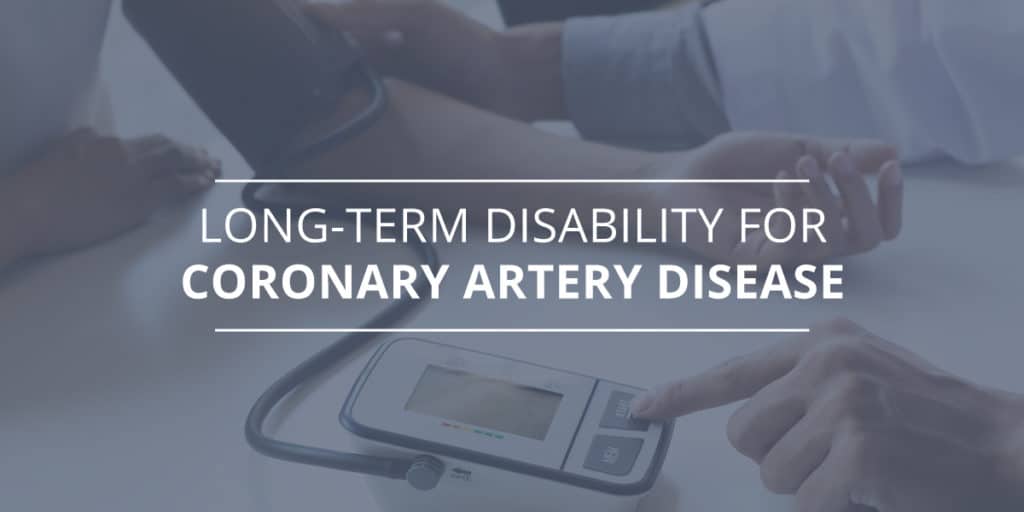
Can you receive disability for coronary artery disease? Yes, there are options to receive disability benefits for coronary artery disease. Coronary artery disease is the most common form of heart disease in the United States. It is also a deadly disease, responsible for the loss of 370,000 Americans each year. Yet despite how widespread coronary artery disease is, many of us are unfamiliar with how disabling this condition can be.
Even before coronary artery disease causes heart attacks, it can cause extreme fatigue, shortness of breath, chest pain, and other symptoms. This can make it difficult for an individual to continue to work — particularly if they have a physically demanding job.
Long-term disability (LTD) benefits can close the gap, offering monthly payments to help you maintain financial stability during a challenging time. A Cherry Hill disability benefits attorney can work with you to help you successfully apply for this type of benefit.
What Is Coronary Artery Disease?
What Is Coronary Artery Disease? Coronary artery disease is a disease that develops when the blood vessels that supply the heart with blood, oxygen, and nutrients — the coronary arteries — become damaged or diseased. This is usually due to a build-up of plaque, which contains cholesterol, along with inflammation.
A build-up of plaque leads to a narrowing of the coronary arteries, which decreases blood flow to the heart. Eventually, this may cause chest pain, shortness of breath and other signs of coronary artery disease. If these arteries become completely blocked, it may cause a heart attack.
What are the Symptoms of Coronary Artery Disease?
The symptoms of coronary artery disease include:
- Chest pain (also known as angina), typically on the middle or left side of the chest
- Shortness of breath
- Heart attack
Coronary artery disease may lead to heart failure due to a chronic deprivation of oxygen and nutrients. It can also cause an abnormal heart rhythm, known as an arrhythmia.
Coronary artery disease is diagnosed through a number of physical exams, medical history, and a number of diagnostic tests. These may include an electrocardiogram (ECG), an echocardiogram, a stress test, a cardiac cauterization and angiogram, and a heart scan.
Treatment for coronary artery disease includes lifestyle changes, medication, and certain medical procedures. If lifestyle changes such as losing weight, reducing stress, quitting smoking, exercising and eating healthy foods are not enough, then various drugs may be used to treat this condition.
Typical medications used for coronary artery disease include drugs that lower cholesterol, aspirin, beta-blockers, calcium channel blockers, nitroglycerin tablets, ACE inhibitors and ARBs, and Ranolazine to help with chest pain. Surgical treatment, such as bypass surgery or stent placement, may be necessary for more advanced cases.
How Can You Qualify for Long-Term Disability If You Have Coronary Artery Disease?
How Can You Qualify for Long-Term Disability If You Have Coronary Artery Disease? To qualify for long term disability for coronary artery disease you will need to you will need to prove not only that you have a disability, but that this disability prevents you from working. LTD benefits are granted based on an individual’s inability to work due to a disability. Based on your specific policy, if you are approved for LTD benefits, you will receive a percentage of your salary each month (usually between 50 and 60%) for anywhere from 24 months until retirement age.
In the case of coronary artery disease, it is not enough to simply demonstrate that you suffer from this condition. Even if you have had a heart attack due to the build-up of plaque on your artery walls, it may not be sufficient to qualify for benefits. Instead, you have to show that the symptoms of your coronary artery disease make you unable to carry out your job duties.
This can be done in a number of ways. First, you will need to submit evidence that you have been diagnosed with coronary artery disease. To do so, you should submit medical records related to your diagnosis, including test results from an ECG, an EKG, or a stress test.
Once you have established that you have coronary artery disease, the next step is to show how your specific symptoms make it difficult (or even impossible) for you to work. Your treating physician can assist you with this by writing a letter giving their opinion about your limitations based on your condition.
For example, you may suffer from shortness of breath and severe fatigue due to the lack of oxygen reaching your heart. Your doctor may limit you to lifting no more than 10 pounds and to standing or walking no more than 1 hour in an 8-hour shift. This can demonstrate the ways in which your ability to work is compromised because of your coronary artery disease.
A disability benefits attorney can help you assemble the proper documentation, ensuring that you are meeting the definition of disability under the terms of your policy. Your lawyer can also monitor your claim, and then advocate for you throughout the process — including filing an appeal for you if your claim is wrongfully denied.
Want to Learn More? Contact Us for a Free Disability Claim Review
Coronary artery disease has the potential to lead to heart attacks — and can be seriously disabling to anyone who suffers from this condition. If you have been diagnosed with this illness, you may be entitled to long-term disability benefits through an individual or group insurance policy.
Bross & Frankel is dedicated to helping people who are unable to work due to an illness or injury. With more than 20 years of experience, we know the system — and how to get results for our clients. To schedule a free disability claim review, contact our office today at 856-795-8880 or reach out online.